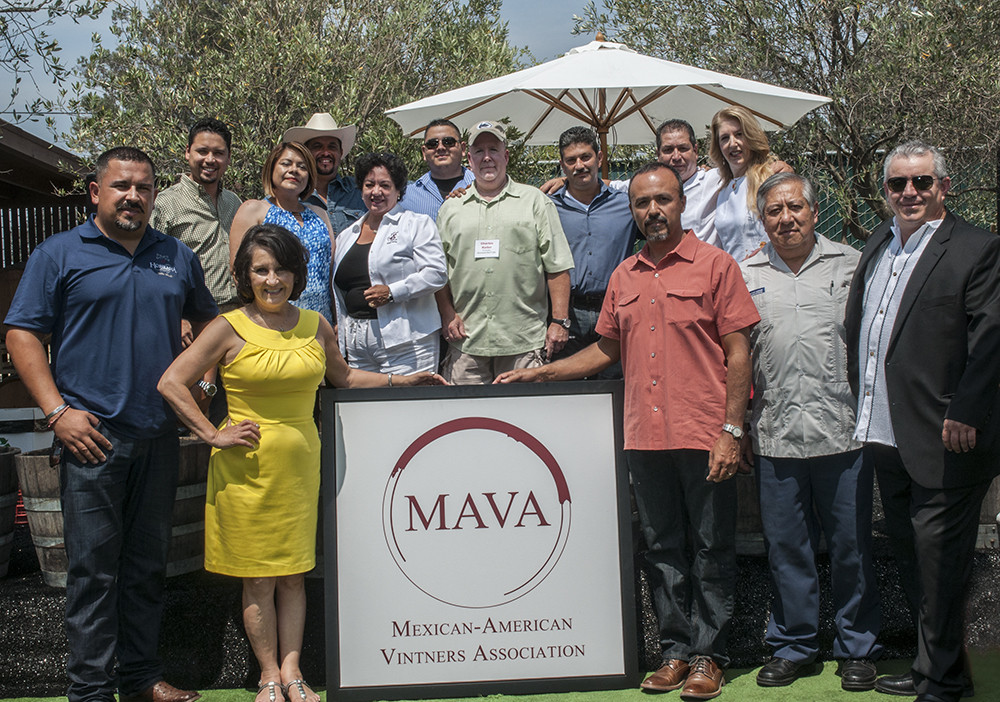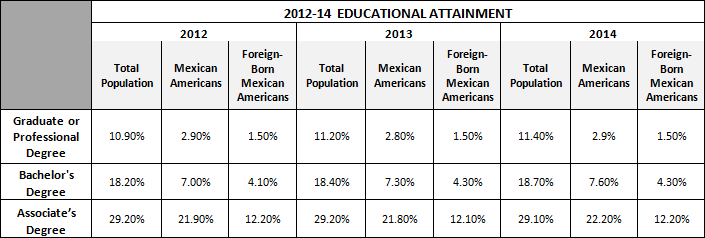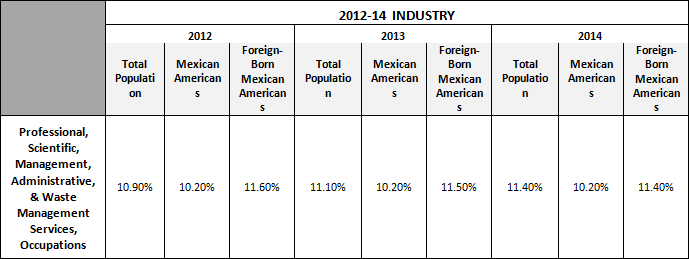

Texas Education Scoreboard
The capacity of Texas schools to prepare students for college varies significantly by community. Use the Texas Education Scorecard to compare data on key education milestones from Pre-K through college completion.
Scroll over a county to see its education scorecard rating. Click through to see a detailed Education Scorecard with information on how your county can improve…
Link to article
Open Letter to Arthur Liman
AL Higginbotham – Yale Law & Policy Review, 2015
… of Clarence Thomas has accomplished anything, it has accomplished this: it has made it safe
for the enemies of racial progress, such as Professor Lino A. Graglia of the University of Texas
Law School, to assert openly that “[b]lacks and Mexican- Americans are not …
Link to article
Why Latino biz is leaving $1.4 trillion on the table
One focus of the Republican debate on the economy last night was immigration. Donald Trump, echoed by several other candidates, again called for increased border security between the U.S. and Mexico.
But when it comes to Latinos and the U.S. economy, absence won’t make the heart grow fonder. A new report from the Stanford Latino Entrepreneurship Initiative (SLEI) shows that the number of Latino-owned businesses is expanding at a breakneck pace — three times the national average — and that the Latino population is a major force in the country’s economy…
Link to article
Hidden in Plain Sight: A Note on Legitimation Crises and the Racial Order
MC Dawson – 2015
… that have conflicting interests and ideologies. Blacks and Latinos (particularly Mexican Americans,
who have been targets of increasingly vile and racist anti-immigrant attacks), are becoming
increasingly disillusioned and angry due to the escalation of white supremacy within …
Link to article
Felix Arroyo’s Journey Through Public Education to Housing the Homeless
Growing up in Boston Public Schools, Felix Arroyo got to know the University of Massachusetts Boston through the Talented and Gifted (TAG) Latino Program, a program for young English language learners.
“In middle school I was running around those hallways at UMass Boston,” he says. “I’m looking forward to being a partner with UMass in my role now, while I have it, to make sure that the school is successful.”…
Link to article
Technology startup seeks to connect Mexican IT workers with U.S. employers
Mexican Nationals seeking an opportunity in the United States typically face an extra barrier when it comes to visa sponsorship through employers. But one San Antonio startup hopes to ease that entry and help fill local bilingual information technology jobs.
Jesus ‘Tito’ Salas ran the San Antonio Mexican Entrepreneurial Challenge competition for Geekdom last year that sought to connect South Texas to Mexican startups…
Link to article
The Power of Zero
Fifty years after founding the influential theatre company, El Teatro Campesino, Luis Valdez visited USF last Tuesday to give a lecture called “The Power of Zero.” The talk focused primarily on the connection between the Mayan zero and the influence it holds on different aspects of life, especially its capacity to allow for change. Being at ground zero holds great potential and is the root of development, which Valdez related to the Chicano movement…
Link to article
Mexican Conductor Alondra de la Parra Makes History
Conductor and pianist Alondra de la Parra is in a league of her own. And come next year, when she steps onto the podium as the first female chief conductor and musical director of the Queensland Symphony Orchestra, one of Australia’s three largest orchestras, she will live in a more rarefied space—one of the few females directing a major orchestra…
Link to article
Educational Inequalities Reflecting Sociocultural and Geographical Embeddedness? Exploring the Place of Hispanics and Hispanic Cultures in Higher Education and Research Institutions in New Mexico
T Freytag – Ethnic and Cultural Dimensions of Knowledge, 2016
… The Hispanic population in New Mexico includes two particularly large subgroups: (a) immigrants
from Mexico (“Mexican Americans”) and (b) “Hispanos,” who represent the descendants of Spanish
immigrants and settlers from the sixteenth century until the end of the Spanish …
Link to abstract
George Lucas Just Donated $10 Million for Black and Latino Kids to Study Film at USC
It’s widely known that the University of Southern California boasts one of the world’s greatest film schools, with notable alums among its ranks, including Judd Apatow, Ron Howard, and George Lucas standing out on a list of the literally hundreds of Hollywood big shots who have graced its halls. But much like the Hollywood dream factory that plucks its recruits directly from each graduating class, USC’s alumni list also happens to be pretty damn white, and while there are undoubtedly myriad reasons for this imbalance, it probably has a little to do with the school’s exorbitant private university tuition…
The Museum of Latin American Art is Showing Chicano Artists For the First Time in 20 Years
A year ago,“Somewhere Over El Arco Iris/ Chicano Landscapes, 1971- 2015” – the most recent exhibit at the Museum of Latin American Art (MOLAA) in Long Beach – wouldn’t have been on display. The 25 piece exhibition, featuring artists whose styles range from experimental expressionism to urban street art, is inspired by the Chicano experience of the last 40 years. Collectively, its mixed-media, photographs, drawings and paintings make evident how instrumental some Chicano artists have been in creating and defining LA’s contemporary… Link to article
From the Delano Grape Strike to the Mexican American Vintners Association
By Humberto Gutierrez

There have been several longitudinal studies on Mexican American mobility showing that although the monetary movement of Mexican Americans is not quite as rapid as that of whites, there is still a steady accumulation of wealth across generations.
This mobility is evidenced by the progress made by Mexican American professionals. As evidence of this success, we have witnessed the birth of several prominent professional associations. Most notable are:
- MAES, Latinos in Science and Engineering
- AMAE, Association of Mexican American Educators
- MABA, Mexican American Bar Association
- SACNAS, Society for Advancement of Chicanos and Native Americans in Science
- MAHPA, Mexican American Hispanic Physicians Association
- MABPA, Mexican American Business and Professional Association
- MALFA, Mexican American Latino Faculty Association
- MAVA, Mexican American Vintners Association
The latest American Community Survey shows year-to-year progress, or lack of it, on the survey’s annual census.
Prominent among this year is the continued progress of Mexican American college enrollment, which has jumped from 18.1% in 2013 to 18.7% in 2014. Unfortunately, graduate or professional degrees remain low with a small gain. For 2013, the graduate or professional degree was 11.2% and for 2014 this percentage climbed to 11.4% for the total population, while for 2013 it was 2.8% for Mexican Americans, and 2.9% for 2014.


Occupations in management, business, science, and arts showed a nice increase for Mexican Americans, from 16.7% to 17.4% while for the total population percentages went from 36.3% in 2013 to 36.9% in 2014. Mexican Americans still lag far behind the total population but there is a slight gain as compared to the total population.

For industry, numbers have gone up slightly for the total population but have remained stagnant for Mexican Americans.

References
- Census Bureau, Selected Population Profile in the United States: 2014
- United States S0201 and B05006. Selected Population Profile in the United States
- Population Groups: Mexican and Mexico (foreign-born)
- Data Set: American Community Survey 1-Year Estimates for years 2012 and 2014
- Census Bureau, American Fact Finder, Selected Population Profile in the United States
Mariachi Music as a Pathway to Higher Education in the United States
L Salazar – Journal of the Vernacular Music Center, 2015
… Due to low expectations, poverty, and possible language barriers, Latinos, particularly
Mexican-Americans, are plagued with low academic achievement and high high-
school dropout rates (Torres and de la Torre 1997:100). …
Link to article
Visas For Latin American Professionals Available at U.S. Consulates Overseas
Economies of 26 Latin American countries show signs of weakness and … TN for Mexican professionals: A list of 61 designated professions and the …
Link to article
MEXICAN-AMERICAN WOMEN AND ABORTION: EXPERIENCES AND REFLECTIONS
LB Welter – 2015
… for Meaning-making …..122 and Guidance …..122 Theme 3. Mexican-American Cultural Values …
215 Positive Outcomes from Abortion …..219 Expanded Academic, Professional, and Financial …
Link to dissertation
PLAYING IN PARADISE: THE SOCIAL IMPACTS OF BEER GARDENS IN BORDERLANDS CITY 1870-1915
VA Herrera – 2015
… 5 Thomas Sheridan, “Peacock in the Parlor: Frontier Tucson’s Mexican Elite,” The
Journal of Arizona History 25, no. 3 (1984): 187. 6 Ibid., 34. Page 6. 6 … races in one
space; Mexicans, Americans, Castilians, and Native Americans all …
Link to thesis
Students need diverse teachers in their schools
While many San Francisco residents are aware of California’s teacher shortage, a second shortage threatening our schools may be less familiar: We don’t face just a numbers gap, but also a demographic gap. Statewide, 73 percent of students in California schools are nonwhite, compared with only 29 percent of teachers.
It’s the largest demographic gap between students and teachers nationwide…
Link to article
UC Riverside Library Awarded Grant to Participate in the Latino Americans: 500 Years of History Initiative
RIVERSIDE, Calif. (www.ucr.edu) – The University of California, Riverside Library received a $10,000 grant from the National Endowment for the Humanities (NEH) and the American Library Association (ALA) to participate in the Latino Americans: 500 Years of History initiative…
Link to article
Conceptualizing Interpersonal Relationships in the Cultural Contexts of Individualism and Collectivism
CRPM Greenfield, B Quiroz
… There werc fifteen teachers from this school, including-eleven European Americans, two African
Amer- icans, and two Mexican Americans [one was born in the United States. and one had
immigrated thirteen years before). School “2 was an urban public school. …
Link to article
Racial Disparities in Orthodontic Care for Medicaid -Enrolled Children in Washington
JM Merritt – 2015
… indicative of a class II malocclusion. Whites, Blacks and Mexican Americans had a varying
prevalence of 57.6%, 64.4%, and 66.4% respectively for >2mm overjet.10 Class III malocclusion …
Blacks and Mexican Americans. Racial Disparities in Orthodontic Use for Children …
Link to thesis



 Written by
Written by